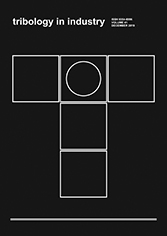Volume 41, No 3, 2019, Pages 394-400
Corrosion Rate and Wear Mechanisms Comparison for
Aisi 410 Stainles Steel Exposed to Pure Corrosion and Abrasion-corrosion in a Simulated Marine Environment
Authors:
G.A. Rodríguez-Bravo ![]() ,
M. Vite-Torres*
,
M. Vite-Torres* ![]() ,
J.G. Godínez-Salcedo
,
J.G. Godínez-Salcedo ![]()
DOI: 10.24874/ti.2019.41.03.09
Abstract:
Due to its diversity of applications in mechanical components such as; pumps, valves and turbine parts, AISI 410 stainless steel is exposed to combined conditions of wear and corrosion. Although several works have been carried out to evaluate some properties of this steel, there is not enough information about the changes in its corrosion rate when the work conditions change from pure corrosion to abrasion-corrosion in a marine environment, so it is necessary to delve into an analysis from the tribocorrosion perspective, since it is still been a phenomenon not completely understood. This work presents results of AISI 410 corrosion rate analysis, carried out in a novel test rig based on ASTM G-105 wet sand apparatus but adapted with an electrochemical corrosion cell to contain the corrosive medium. Two electrochemical techniques were used: polarization resistance (Rp), and anodic potentiodynamic polarization. Substitute ocean water (aqueous medium), and silica sand (abrasive particles) were used to recreate the medium. SEM analysis was performed after each test to determine wear mechanisms. Material does not present a good corrosion resistance under pure corrosion condition contrary to abrasion-corrosion. Polarization curves do not show a passivation zone of the material when it is submerged in medium.
Keywords:
Tribocorrosion, Corrosion rate, Seawater, Abrasion-corrosion, AISI 410





